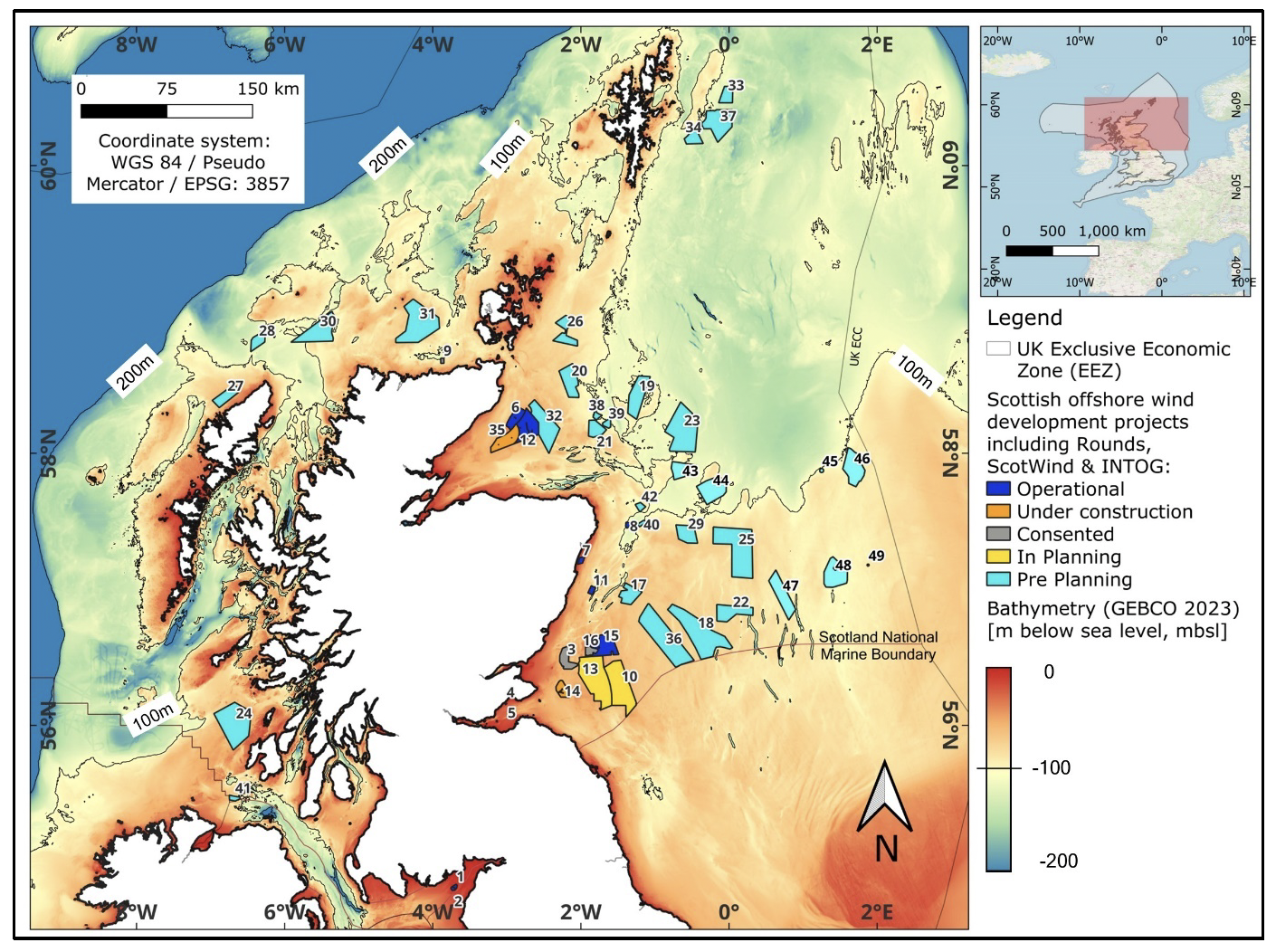Offshore Wind Sustained Observation Programme (OW-SOP): scoping report
Physical processes are important as they influence the productivity of the phytoplankton which form the base of the entire North Sea ecosystem. This project recommends approaches to assess the potential impact of offshore wind farms on physical processes.
Background and objectives
Scotland has a current reported potential pipeline of over 40 GW of OW projects, on top of the 3 GW which is currently operational (Figure 1.1 and Appendix A). ScotWind reflects a very significant market ambition for OW in Scottish waters, with around 27.6 GW across 20 projects. The INTOG leasing round could also potentially add around 5.5 GW of capacity, of which up to 449 MW for INnovation (IN) projects and 5 GW for Targeted Oil and Gas (TOG) decarbonisation (Offshore Wind Scotland, 2024).
The Scottish Government developed the Sectoral Marine Plan for Offshore Wind Energy (SMP-OWE) to inform the spatial development of ScotWind. This plan, adopted in October 2020, identified 15 sustainable options for future commercial scale OW developments. The plan is currently undergoing a review, as part of the Iterative Plan Review (IPR) process, to update the plan to reflect the ScotWind and INTOG leasing rounds and to ensure the plan remains reflective of current scientific understanding and knowledge, as well as the wider regulatory and policy context. Scotland, as part of the UK OW market, is already a key player being home to the Beatrice OWF demonstrator project in the Moray Firth, the world’s first deep-water OW turbine deployment and Robin Rigg, E. ON’s fully commissioned 180 MW OWF in the Solway Firth. Also, in 2017, the world’s first commercial FLOW project became operational (Hywind Scotland) just off Peterhead in Grampian. The 2022 ScotWind and INTOG lease rounds will also provide a significant push to the Scottish offshore renewables industry. Very recently SSE and TotalEnergies’ Seagreen Phase 1 OWF, Scotland’s largest OWF, became fully operational (October 2023), as the world’s deepest fixed-bottom OWF.
Such a rapid and large-scale utilisation of seabed space can create a positive socio-economic impact through the generation of green electricity, creating new jobs, and strengthening the country’s economy; however, it also introduces questions and uncertainties related to any potential environmental impact of such a large-scale expansion of OWFs. Based on these considerations, this report’s objectives are to:
i. Review the current knowledge and data availability around the baseline (in absence of OWFs) physical and biogeochemical parameters of the water column within, but not limited to, the Scottish North Sea waters.
ii. Inform how existing data can be used to define the water column baseline parameters, also identifying what are the data gaps that prevent a proper forecast (using modelling techniques) and understanding of the potential impact of future OWF developments.
iii. Review the importance and the limitations of modelling strategies in predicting environmental changes due to OW infrastructures.
iv. Review existing observational programmes/data which can be used for environmental impact assessments.
v. Recommend new and targeted observational programmes.

Contact
Email: ScotMER@gov.scot
There is a problem
Thanks for your feedback